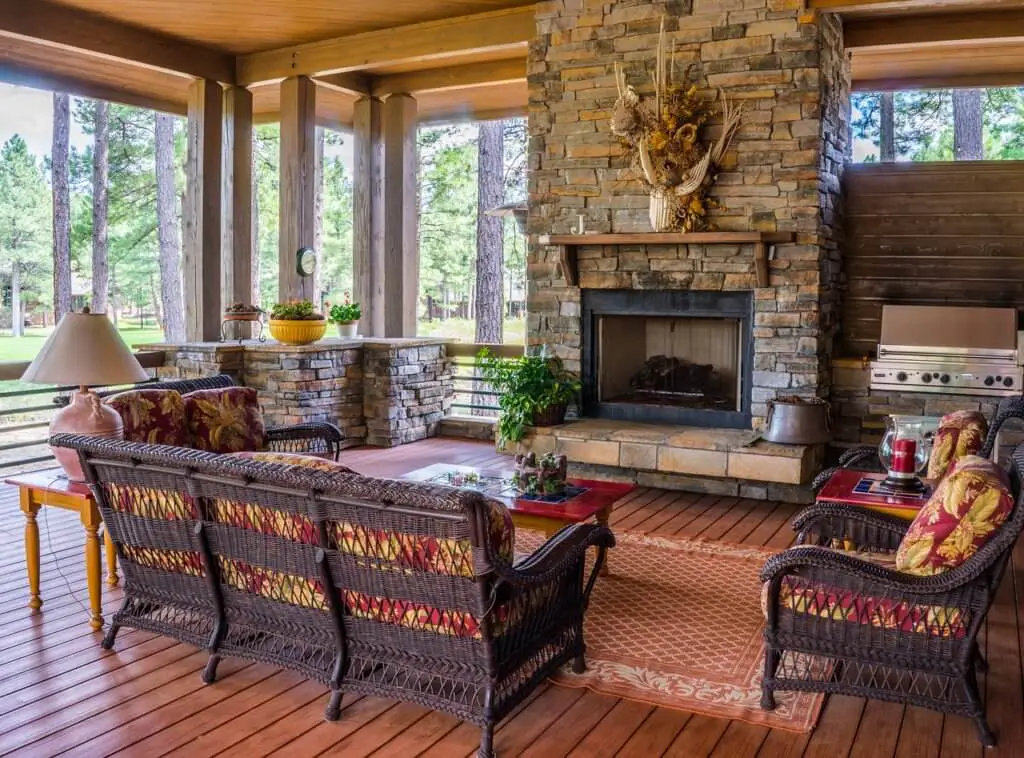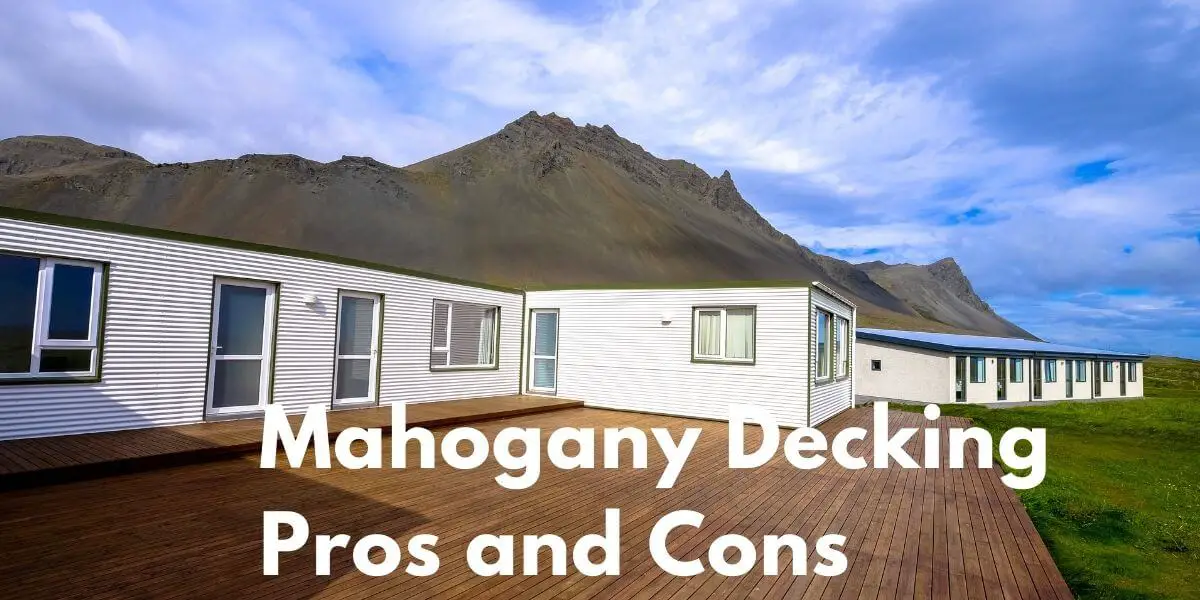There is a lot of material available for decking in the market, but choosing a suitable material is also very important, especially when you are searching for construction material for decking or flooring. Sometimes, it can be challenging or confusing to select between hardwood or pressure-treated wood. Here, we will talk about mahogany wood, which is hardwood.
Mahogany wood is famous for Decking and Flooring and its natural appearance. It gives you a rich, brown-red color and striped look. It is naturally rotting and decay-resistant. So that it becomes more durable compared to the many other hardwoods. It is perfect for decking. Mahogany has enough hardness that it is suitable for decking with less maintenance.
Mahogany is generally used to make kitchen cabinets, doors, and guitar bodies in addition to decking and flooring.
| Mahogany Tree Scientific Name | Swietenia |
| Color of Mahogany Wood | Reddish-brown color |
| Genuine Mahogany | Honduran Mahogany, Mexican Mahogany, Cuban Mahogany |
| Mahogany, Honduran Mahogany Hardness | 800 lbf |
| Height and Diameter | 150 feet high and between 10 and 12 feet in diameter. |
Mahogany Decking Pros
Durability and Stability
Durables and stability are very important for decking. Everyone wants the wood used on the floor to be more solid and durable, with less maintenance required. Mahogany is a durable and stable wood. It has been durable for many centuries. Stability is essential for a deck because it is used outdoors. Where it is in contact with bad weather, dust, and Moisture.
A deck made of mahogany wood lasts for about 40 years. If it is maintained regularly, it is also durable for 45-60 years. The sanding and oiling process is a necessary step to increase the durability. The process of oiling is done after sanding. So that it will hold the wood fiber well.
Rot and Decay-resistant
In rainy areas, the decks are out in the open sky, where the water is constantly in contact and also in contact with the ground. So that the wood is more likely to rot. Therefore, it is important to use pressure-treated or natural rot and decay-resistant wood for decking that can maintain the wood for a long time. Mahogany is a good Rot and decay-resistant wood.
Availability
Mahogany is found in various tropical regions worldwide. Honduran mahogany (Swietenia Macrophylla) continues to be available in wood or veneer. The species is listed (CITES Appendix II, IUCN Red List) as vulnerable. The wood of this species has decreased by 20% in the last three generations.
Large and Clear Lumber
Decking requires large and seamless wood. Small wood makes the structure weak, and the builder faces difficulty in working. Lumber that has low knots is perfect for lumber decking. The mahogany tree is up to 150 feet high and between 10 and 12 feet in diameter so that a long lumbar can be produced from its tree at once.
Dark color
The mahogany is famous for its dark, rich reddish-brown color. Its best color is considered better than many heartwoods. It gets darker over time. So that it gives great looks even after getting old. It gets well polished and painted.
Grain Pattern
An interlocking grain pattern is found in mahogany. Which builds during the growth of the tree. This interlocking grain strengthens the decking. So that it can withstand a lot of weight without cracking. After being treated with marine oil, it looks like teak.
Santos Mahogany, Luan Mahogany, and Mountain Mahogany Wood were used in the decking and flooring.
Easy to Work
Mahogany has excellent workability. It can easily work with small and large tools. Even after hardness, it can be easily curved and cut. Its grains hold glue, nail, and screw well. The presence of interlocking grain can cause some machine operation problems.
Mahogany Decking Cons

High Price
The price of mahogany is more expensive than other hardwoods. For this large deck area, some people may find it expensive. But it is easily affordable for small decking.
Some designers and constructors believe that for true mahogany, you can expect to pay mid $20s to mid $30s per board ft. Due to its rising price, Sapele (mahogany alternative) is being used. But not at all like mahogany. Due to its amazing properties, it is widely harvested today. The United States is the largest importer.
Because this is expensive, some boat makers use mahogany veneer sheets instead of solid mahogany. But we cannot use Veneers for decking.
Difficult to Install
Due to the interlocking grain, it can be difficult to install. While working on mahogany, its grains become difficult for tools. Due to the interlocking grain, many blades and tools are required to work on small parts of the wood.
Regular Maintenance
Mahogany decking requires resealing or staining every 2-3 years, depending on the conditions in your area. Resealing or staining prevents damage to wood from bad chemicals and UV rays. It is not as durable as aluminum.
How do I Protect My Mahogany Deck?
Taking care of the deck may seem a bit difficult. But it is very important. If your deck is not protected, then the money you put in will go to waste.
- Clean your deck regularly. Try to Brush the deck thoroughly twice a year.
- Do not let any moisture remain on the deck.
- Avoid dragging furniture along the boards.
- Oiling the deck to keep the sine and natural color intact.
How Much Does Mahogany Decking Cost?
We all know that the true mahogany price is very high. Unfinished mahogany lumber ranges from $ 6 to $ 30 per board foot.
The price of mahogany decking depends on many things. But many companies in America charge between $ 7 and $ 10 per square foot of Mahogany for decking.
Conclusion
Each construction material has some advantages and some disadvantages.
But we should pay attention to what is the importance we have in this wood species. The mahogany is an amazing wood species. It has been used for decking and flooring for a very long time.
If you want a better dark, great-looking decking and you don’t think much about its price. Then mahogany is a better option for you. But if you get any other better hardwood. The price is less than mahogany, and the properties are similar to mahogany. So you can choose Harwood.



Comments are closed.